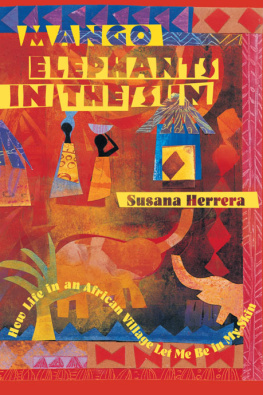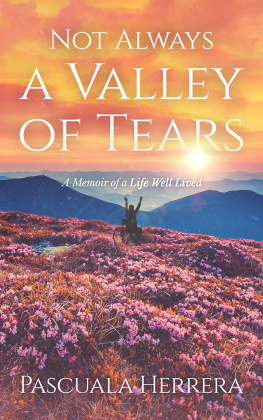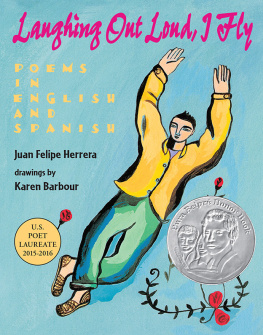Californian Susana Herrera spent two years in northern Cameroon in what might be described as the classic Peace Corps assignment: teaching school in a remote African village. Jam bah doo nah? (Are you in your skin?) her neighbors ask her by way of greeting, and the response means, Yes, I am alive, fully present and experiencing the moment.
Herreras account is filled with cross-cultural anecdotes that are alternately amusing and poignant. She is appalled as she watches the other teachers administer corporal punishment, only to discover that her own students dont respect her authority because she refuses to beat them. Her solution is to devise more creative forms of classroom discipline. A pompous village chief offers her a bloody goat head as a gift of courtship. Herrera feels the thrill of triumph when her most ambitious student masters a bicycle for the first time, until the girls older brother coldly rebukes the foreign teacher, Dont put desires in her head that she can never have. Herreras growing friendship with several local women and her tender romance with a handsome Cameroonian doctor give the narrative its continuity and novel-like structure.
Scott Zesch, Austin American-Statesman
Whether shes writing about falling in love, getting malaria or teaching a young woman how to ride a bicycle, Herrera draws in readers with her uncommon intelligence and wisdom.
Mary Spicuzza, Metro Santa Cruz
ABOUT THE BOOK
When the Peace Corps sends Susana Herrera to teach English in northern Cameroon, she yearns to embrace her adopted village and its people, to drink deep from the spirit of Mother Africaand to forget a bitter childhood and painful past. To the villagers, however, shes a rich American tourist, a nasara (white person) who has never known pain or want. They stare at her in silence. The children giggle and run away. At first her only confidant is a miraculously communicative lizard.
Susana fights back with every ounce of heart and humor she possesses, and slowly begins to make a difference. She ventures out to the village well and learns to carry water on her head. In a classroom crowded to suffocation she finds a way to discipline her students without resorting to the beatings they are used to. She makes ice cream in the scorching heat, and learns how to plant millet and kill chickens. She laughs with the villagers, cries with them, works and prays with them, heals and is helped by them.
Village life is hard but magical. Poverty is rampantyet people sing and share what little they have. The termites that chew up her bed like morning cereal are fried and eaten in their turn (bite-sized and crunchy like Doritos). Nobody knows what tomorrow may bring, but even the morning greetings impart a purer sense of being in the moment. Gradually, Susana and the village become part of each other. They will never be the same again.
SUSANA HERRERA spent over two years as a Peace Corps volunteer in northern Cameroon. Now a schoolteacher in Watsonville, California, she uses many of the stories from her life in an African village to teach her students about compassion, diversity, strength, and faith.
Sign up to receive news and special offers from Shambhala Publications.

Or visit us online to sign up at shambhala.com/eshambhala.
MANGO
ELEPHANTS
IN THE SUN
How Life in an African Village
Let Me Be in My Skin
SUSANA HERRERA

Shambhala
Boston & London
2014
Shambhala Publications, Inc.
Horticultural Hall
300 Massachusetts Avenue
Boston, Massachusetts 02115
www.shambhala.com
1999 by Susana Herrera
Cover art by Roberta Arenson
Cover design by Deborah Hodgdon
All rights reserved. No part of this book may be reproduced in any form or by any means, electronic or mechanical, including photocopying, recording, or by any information storage and retrieval system, without permission in writing from the publisher.
The Library of Congress catalogues the hardcover edition of this book as follows:
Herrera, Susana.
Mango elephants in the sun: how life in an African village let me be in my skin/Susana Herrera.
p. cm.
eISBN 978-0-8348-0003-8
ISBN 1-57062-376-7 (cloth)
ISBN 1-57062-572-7 (pbk.)
1. Guidiguis (Cameroon)Social life and customs. 2. Herrera, Susana. 3. Peace Corps (U.S.)CameroonGuidiguis. 4. Guidiguis (Cameroon)Description and travel. I. Title.
DT581.G85H47 1999 98-41764
967.IIdc21 CIP
To my love, my soul mate, John David Guillory
whose faith and love nourished this book
to wholeness and joyful awakenings.
I love you always. Promise.
For my family in Africa
who opened my eyes to
the miracle of each breath
and taught me to celebrate
being in my skin.
CONTENTS
Lizard dreams are sacred ground,
A holy land of chanting and dancing
In ceremony circles around
Africas ancient fires.
The Lizard
Cameroon, West Africa
427 BC
Mango trees,
Banana leaves,
Elephants, zebras, giraffes, and snakes.
A huge black and orange lizard,
painted dancing and breathless drumming;
tangerine sunrises and ripe moons
that I can reach and pluck from the sky.
AhOnly a dream....
No.
Im in Africa.
No.
Africa is in my dreams.
Wait....
That sound is real.
What is that sound?
Its the call from the mosque for prayer.
I am in Africa!
I chant it out loudAfrica; againAfrica. The sound resonates within, as if I am a bell being strucka call to my soul to awaken.
The fragrance of the African desert permeates the air, and I drink it in. Im savoring the tangy sweetness of mornings juicy breeze and the bitterness of dust being stirred by children leaving footprints behind their song. The rays of sun tickle my lips even before my eyes open. From my bed outside in front of my house, I look up at the stars in their slow-fading flicker. I know Im no longer dreaming because, with each inhalation, Africas essence fills my body. I exhale and linger in a sacred silence for which my heart has hungered.
The villagers awake with a merciless bang. Cows holler as they pass along the dusty, brown road next to my little cement house, which is standing out in sharp contrast to the surrounding mud huts. Hot peanut oil sizzles, frying the beignets in my neighbors outside kitchen. Roosters join the Islamic prayers ringing out across Guidiguis. The desert sand awakens and circles us all in its embrace. Women clang their buckets, filling them at the water well, chattering of village news. Even with my few words of Fulfulde, I understand that the villagers are talking about the new white woman. Nasara, nasara, they say, and my ears hurt. Their voices frighten me, for within that word meaning white man, I feel separated from the hope I have of belonging to the community.
I dont want to be an outsider; I dont want to be full of fear; I dont want to resist this adventure. I want to become part of this desert, this village, these people, these laughing children. My body is filling with Africas spirit.
Out of the corner of my eye, I see a huge orange and black lizard, and I turn my head for a better look. The lizard was in my dream! Was it a dream? Or perhaps it was one of those moments when the spirit is somewhere between two worlds. The lizard sits very still, in deep meditation. He observes the village from high up on a tree branch, the eyes of God watching our every move, hearing every thought, and witnessing our dreams.
Next page










